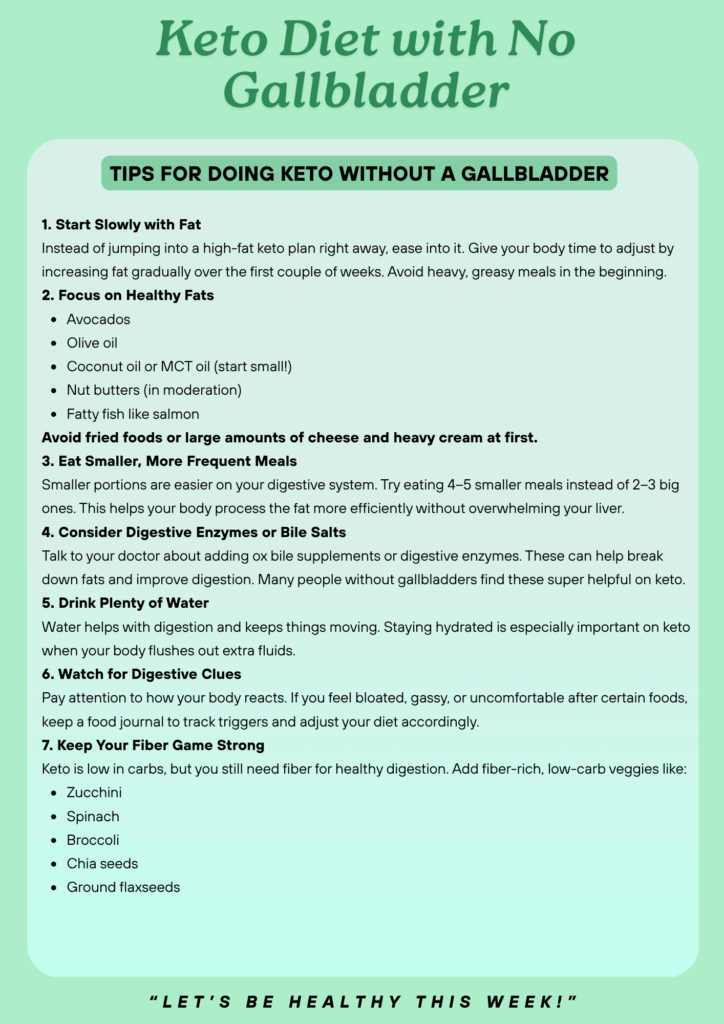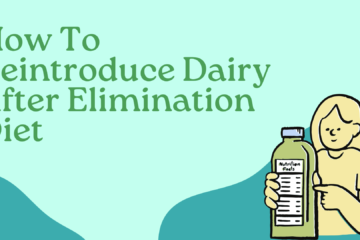Thinking about trying the keto diet but had your gallbladder removed? Don’t worry—you’re not alone, and yes, you can do keto without a gallbladder. You just need a few smart tweaks and a little extra love for your digestive system. Let’s talk about how to make keto work for you without your gallbladder, in a friendly, clear, and doable way.
Table of Contents
What the Gallbladder Does (And Why It Matters)
Your gallbladder stores bile, which helps break down fat. When you eat something fatty, the gallbladder releases bile into the small intestine to help digest it. But if you’ve had your gallbladder removed, bile is still made by the liver—there’s just no “storage tank” to control when it’s released. Instead, bile drips constantly into your intestines.
This can sometimes lead to digestive issues like bloating, diarrhea, or difficulty processing large amounts of fat—exactly what the keto diet is based on. But don’t panic—there are workarounds!
Can You Still Do Keto Without a Gallbladder?
Yes, you can! The key is to go slow, gentle, and smart with your fat intake. Your body can still digest fat—it just needs a bit more support now.
Here’s how to set yourself up for success on keto without a gallbladder.

Tips for Doing Keto Without a Gallbladder
1. Start Slowly with Fat
Instead of jumping into a high-fat keto plan right away, ease into it. Give your body time to adjust by increasing fat gradually over the first couple of weeks. Avoid heavy, greasy meals in the beginning.
2. Focus on Healthy Fats
Go for easily digestible fats like:
- Avocados
- Olive oil
- Coconut oil or MCT oil (start small!)
- Nut butters (in moderation)
- Fatty fish like salmon
Avoid fried foods or large amounts of cheese and heavy cream at first.
3. Eat Smaller, More Frequent Meals
Smaller portions are easier on your digestive system. Try eating 4–5 smaller meals instead of 2–3 big ones. This helps your body process the fat more efficiently without overwhelming your liver.
4. Consider Digestive Enzymes or Bile Salts
Talk to your doctor about adding ox bile supplements or digestive enzymes. These can help break down fats and improve digestion. Many people without gallbladders find these super helpful on keto.
5. Drink Plenty of Water
Water helps with digestion and keeps things moving. Staying hydrated is especially important on keto when your body flushes out extra fluids.
6. Watch for Digestive Clues
Pay attention to how your body reacts. If you feel bloated, gassy, or uncomfortable after certain foods, keep a food journal to track triggers and adjust your diet accordingly.
7. Keep Your Fiber Game Strong
Keto is low in carbs, but you still need fiber for healthy digestion. Add fiber-rich, low-carb veggies like:
- Zucchini
- Spinach
- Broccoli
- Chia seeds
- Ground flaxseeds
These can help reduce any digestive discomfort you might feel.
Sample Keto-Friendly Meal Ideas
Here are a few gentle, no-gallbladder-friendly keto meals:
Breakfast
- Scrambled eggs cooked in olive oil with spinach
- Chia seed pudding with almond milk and a few berries
Lunch
- Grilled chicken salad with avocado and olive oil dressing
- Zucchini noodles with pesto and a bit of grilled salmon
Dinner
- Stir-fried tofu with veggies in coconut oil
- Baked cod with roasted broccoli and lemon butter
Snacks
- Cucumber slices with guacamole
- Handful of walnuts or pecans
Final Thoughts
Yes, the keto diet is a high-fat lifestyle—but with a little extra care and a slower start, you can absolutely follow it without a gallbladder. Think of it as a partnership between your food and your body. Tune in, take it slow, and don’t be afraid to make adjustments.
Always consult your doctor or a nutritionist before starting any diet, especially if you’ve had surgery. With the right support and know-how, keto can still be your path to better energy, focus, and health—even without a gallbladder.




